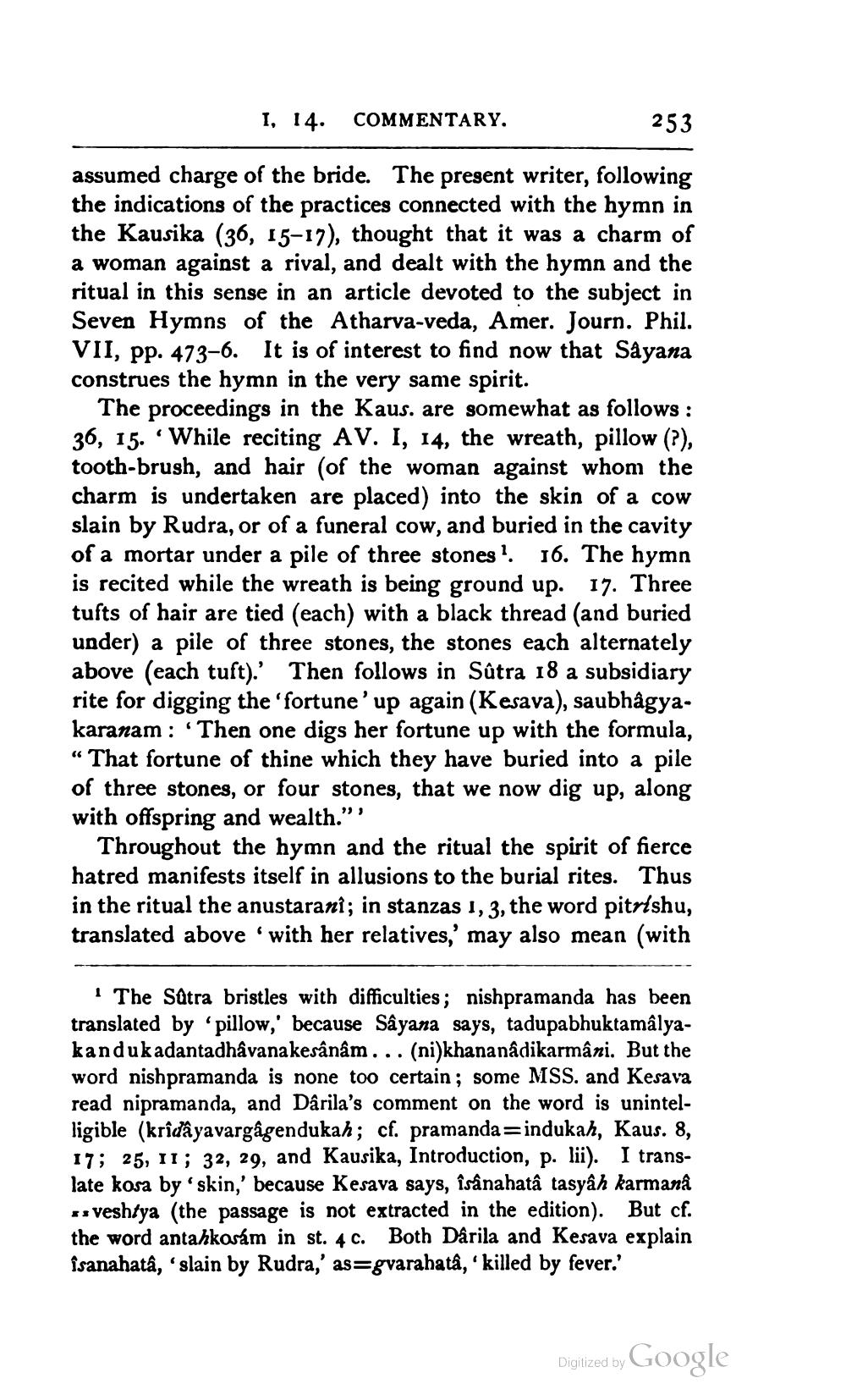________________
I, 14. COMMENTARY.
253
assumed charge of the bride. The present writer, following the indications of the practices connected with the hymn in the Kausika (36, 15-17), thought that it was a charm of a woman against a rival, and dealt with the hymn and the ritual in this sense in an article devoted to the subject in Seven Hymns of the Atharva-veda, Amer. Journ. Phil. VII, pp. 473-6. It is of interest to find now that Sayana construes the hymn in the very same spirit.
The proceedings in the Kaus. are somewhat as follows: 36, 15.'While reciting AV. I, 14, the wreath, pillow (?), tooth-brush, and hair (of the woman against whom the charm is undertaken are placed) into the skin of a cow slain by Rudra, or of a funeral cow, and buried in the cavity of a mortar under a pile of three stones? 16. The hymn is recited while the wreath is being ground up. 17. Three tufts of hair are tied (each) with a black thread (and buried under) a pile of three stones, the stones each alternately above (each tuft).' Then follows in Sûtra 18 a subsidiary rite for digging the 'fortune'up again (Kesava), saubhagyakaranam : 'Then one digs her fortune up with the formula, “That fortune of thine which they have buried into a pile of three stones, or four stones, that we now dig up, along with offspring and wealth.”'
Throughout the hymn and the ritual the spirit of fierce hatred manifests itself in allusions to the burial rites. Thus in the ritual the anustarani; in stanzas 1, 3, the word pitrishu, translated above with her relatives,' may also mean (with
The Satra bristles with difficulties; nishpramanda has been translated by 'pillow,' because Sâyana says, tadupabhuktamâlyakandukadantadhavanakesânâm... (ni)khananâdikarmâni. But the word nishpramanda is none too certain ; some MSS. and Kesava read nipramanda, and Dârila's comment on the word is unintelligible (krîdâyavargâgendukah; cf. pramanda=indukah, Kaus. 8, 17; 25, 11; 32, 29, and Kausika, Introduction, p. lii). I translate kosa by skin,' because Kesava says, î sânahatâ tasyâh karmaná s-Veshtya (the passage is not extracted in the edition). But cf. the word antahkosám in st. 4 C. Both Darila and Kesava explain îsanahatâ, ‘slain by Rudra,' as=gvarahata, ‘killed by fever.'
Digiized by Google




